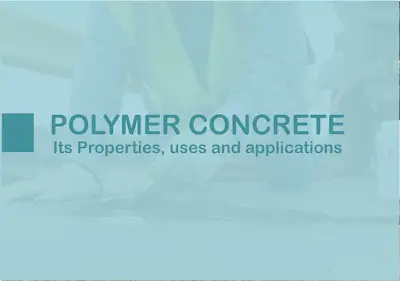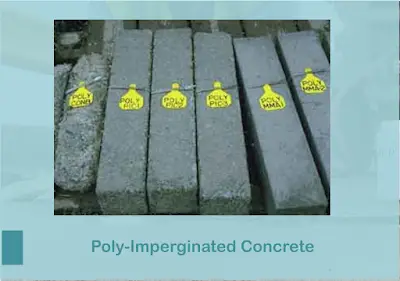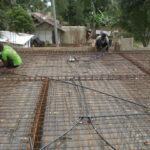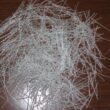Saad Iqbal | 🗓️Modified: January 11, 2018 | ⏳Read Time: 6 min | 👁Post Views: 947
If in 2018 you are not familiar with this highly durable and beneficial construction material than you must read each an every word of this article about Polymer Concrete. Because I\’ll be going through all the aspects of Polymer Concrete including its definition, how it is produced / made, how it is used, what are its benefits and what are its applications in the industry.
 |
| What is Polymer Concrete? |
So Hang on guys !!!
Do you know what makes up a DNA of your body? Or what actually makes up the plastic bottle in which you drink beverages or what actually makes up the wood used in the chair you are sitting on? Give up?
They are all Polymers !!!
Poly = many mers = Molecules : so;
If you fully understand the meaning of polymer you’ll be able to define what this polymer concrete really is?
If you have recently heard the word “polymer Concrete” in 2018 than I am very sad to say you are very late; fellow :D.
Polymer concrete was actually patented in late 1950s (almost 68 years back from now) and was in a very short time it gains enough popularity in shape of repair agents, precast components and overlay materials.
So back to what is polymer?
Polymer is actually a macro-molecule or a large molecule that is composed of many repeated sub-units or smaller molecules called monomers. These polymers are both natural and synthetic having variety of properties that are solely dependent on the properties of the units that forms or creates them. The smaller units repeat themselves in unique patterns to form sometimes three dimensional networks.
So now you know what the polymer is so what about mixing them in concrete?
Why? – Because conventional concrete is too casual to suite our needs and demands.
Polymer concrete is defined as:-
“Composite Concrete mixture with polymers to supplement or substitute completely cement as a binder – is termed as Polymer Concrete”
 |
“Composite Concrete mixture with polymers to supplement or substitute completely cement as a binder – is termed as Polymer Concrete”
|
Now you know what the polymer is but for knowing how polymer is formed lets discuss about chemicals called “Resins”.
Resins are semi-solid or highly viscous liquids that are capable of hardening permanently upon reaction with water or other suitable compounds. Resins can be considered as parent for a polymer because polymers are formed after polymerization or curing of resins. These polymers are added in concrete as epoxy binder that cures and harden concrete into place.
Like traditional concrete Polymer concrete has the same basic ingredients including sand, aggregate and water. The properties and benefits of polymer concrete in terms of rapid curing, excellent bond to cement concrete and steel reinforcement, durability and high strength it is widely used as repair material.
It is evident that properties of polymer concrete will mainly depend on the type of polymer resin used therein; but for a given polymer material the properties may also be dependent on :-
- Content of the Binder added
- Aggregate Size distribution used
- Nature and content of the micro-filler
- Curing conditions
Polymer Resins Commonly used in Polymer Concrete
Most common polymer resins used throughout the world for polymer concrete are as follows :-
- Unsaturated Polyester Resin
- Methyl Methacrylate
- Epoxy Resins
- Furan Resins
- Polyurethane resins
- Urea Formaldehyde resins
Aggregates & Fillers in Polymer Concrete
Aggregates
- 75–80% volume in polymer concrete is occupied by the aggregates and fillers
- aggregates are inert material discrete all over the polymer matrix
- Two types of aggregates are used like traditional concrete
- Coarse aggregate = size more than 5 mm
- Fine aggregate = size less than 5 mm
- As far as the grading of aggregate is concerned it is still not have any standard and is varies almost in all systems.
Use of Micro-fillers
Micro fillers are furthermore added occasionally to the polymer concrete structure to fill the micro-voids.
Use of reinforcing system
For improving the mechanical properties and strength of the polymer concrete; different types of fibers have been reported to be used like steel, nylon fiber, glass and polypropylene. This improves the mechanical properties including toughness, compressive strength, flexural strength, and fatigue strength.
Benefits of Polymer Concrete
From the start I have repeated many times that use of polymer concrete will add in many advantages and benefits relevant to sustainability and durability of the structure under consideration. The Polymer concrete has far better mechanical properties and durability than the ordinary Portland cement concrete. It would be in the significance of polymer concrete business / researchers if the material is categorized and promoted as a polymer composite. In addition to mechanical properties there is a long list of benefits that have been reported in the literature. Some of them are as follows :-
- rapid curing
- high compressive strength
- high specific stiffness and strength
- resistance to chemicals and corrosion
- ability to form complex shapes
- excellent vibration damping properties
- epoxies create a very strong material that shrinks very little as it cures
- Furan resins can withstand high temperatures
- Poly-urea resins can replace phenolics or formaldehydes
Applications and Uses of Concrete
- Polymer concrete is used for many kinds of specialized construction projects. The material is used in electrical or industrial construction where the concrete needs to last a long time and be resistant to many types of corrosion.
- electrical insulation systems
- machine tool applications as replacement of cast iron for machine tool
Cost Impact of Polymer Concrete
Polymer concrete is relatively more expensive than conventional concrete which depends on the quantity of the constituents to be used as per mix design. Moreover some researchers have been reported to use indigenous local materials to be used in the matrix of concrete for better properties.
Polymer concrete has initially been developed as an alternative material in the domain of civil engineering but over a period of time, owing to its superior properties, has found favour as a replacement material in machine building applications.




















